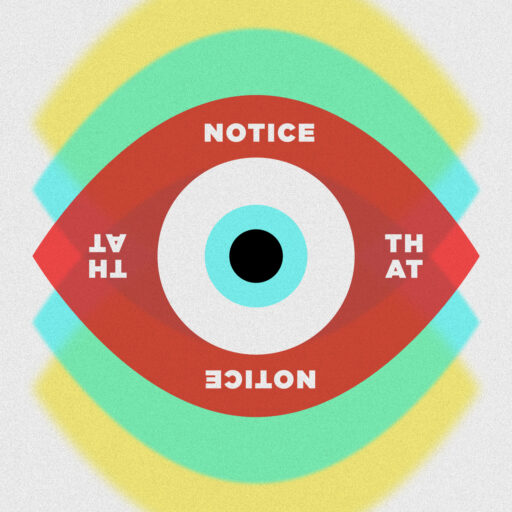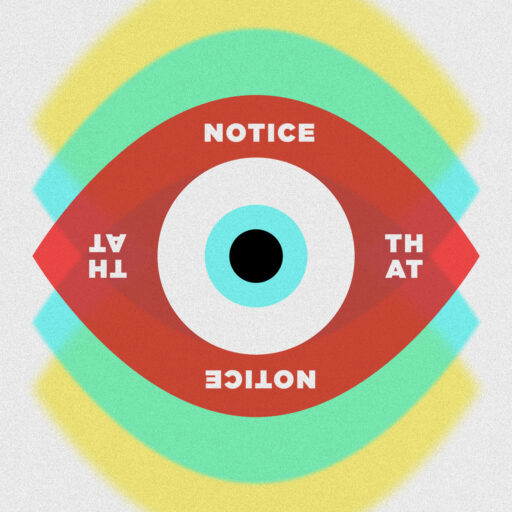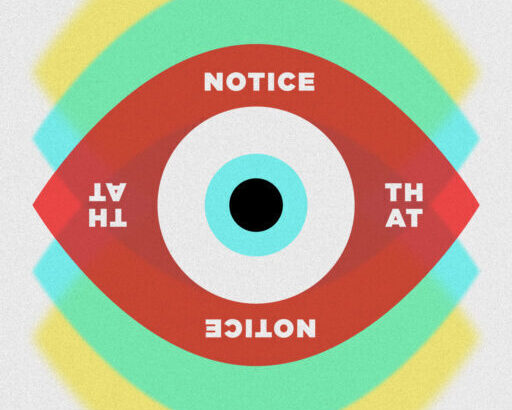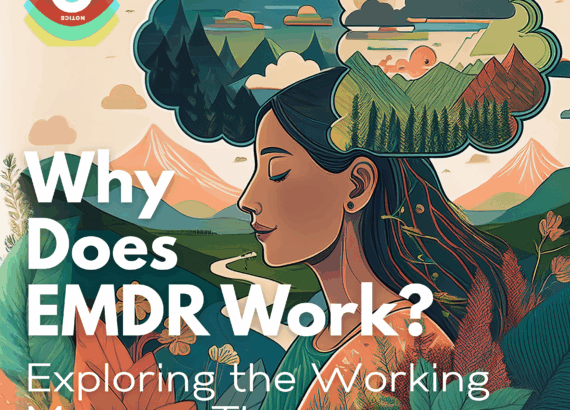Human First: A Conversation with Dana Carretta Stein

Human First: A Conversation with The EMDR Coach, Dana Carretta Stein
What If the Therapist Was the Most Powerful Intervention in EMDR?
Reclaiming the Human Thread in Trauma Therapy
In the world of EMDR therapy, conversations about techniques, protocols, and procedures often dominate the training space. But what if something even more powerful has been quietly present all along? What if the most transformative tool in EMDR isn’t the protocol—it’s the presence of the therapist?
In a recent episode of Notice That: An EMDR Podcast, we sat down with Dana Carretta Stein—EMDR therapist, consultant, and creator of @the_emdr_coach—to talk about something we believe is foundational but too often overlooked: the humanness of the therapist.
What started as a conversation about social media quickly became a deep dive into identity, presence, and the profound responsibility we carry as healing professionals. Together, we explored the tension between objectivity and authenticity, protocol and personhood—and how returning to our full humanity may be the very thing that deepens healing for everyone in the room.
The Therapist Is Not a Blank Slate
Why Authenticity Isn’t a Liability
From the earliest days of graduate training, many of us were taught to strive for neutrality. Keep your personal life out of the room. Don’t display family photos. Don’t self-disclose. Don’t “do therapy on your friends.” While some of this advice is meant to protect boundaries, it also sends a subtler message: your full self does not belong here.
Dana, a deeply relational therapist and group practice owner, pushes back on that message with both clarity and warmth. She shares openly about the exhaustion of compartmentalization and the healing power of being “unavoidably authentic” in the therapy room.
“Clients don’t need a perfect therapist,” Dana reminds us. “They need a human one.”
This doesn’t mean we flood the space with our stories or blur boundaries. It means we let ourselves be present—not as clinical instruments, but as nervous systems, as parents, as people with real emotions, histories, and insight.
Intersubjectivity Is Powerful—And Necessary
Relational Healing Requires a Relational Presence
One of the core themes of this episode is the reclaiming of intersubjectivity—the idea that therapy is not just something we do to a client, but something we co-create with them. The standard EMDR model often emphasizes staying out of the way, trusting the protocol, and avoiding contamination of the client’s process.
But what happens when we over-apply that detachment? What do we lose when we forget that transformation often happens between us, not just within them?
We explore this together by naming what we see in our own work:
- Therapists who dissociate behind the script
- Clients who learn to “perform” EMDR without truly connecting
- Sessions that feel technically correct but relationally sterile
Instead, we offer a vision of EMDR that is alive with presence. One where therapist and client are both brave enough to be real.
Countertransference Isn’t the Problem—Disconnection Is
Why Your “Stuff” Belongs in the Room (with Reflection)
Dana names something many of us intuitively feel but rarely say: the therapist’s unresolved material will show up in the work. The question is not whether it appears, but whether we recognize it, reflect on it, and take care of it somewhere outside the session.
In this episode, we talk about the difference between:
- Reflexive self-disclosure and intentional vulnerability
- Hidden agendas and clean attunement
- Transference reenactments and relational repair
Bridger names this beautifully: “What brought us into this field is often the same strategy we re-enact during the work itself.” Without awareness, this strategy can hijack the process. But with reflection, it becomes a strength—a superpower, as Dana says.
Human First, Then Therapist
Why Presence Is the Foundation of Conceptualization
When Dana trains therapists in her practice, she begins with one simple phrase:
“Human first. Then be a therapist.”
This isn’t just good advice for preventing burnout. It’s a core principle of case conceptualization. The more connected we are to our own internal world, the more intuitively and compassionately we can understand our clients.
From this lens, the therapist’s body isn’t a neutral container—it’s an instrument of resonance.
The therapeutic relationship isn’t a backdrop—it’s the medium through which healing travels.
This conversation reaffirms what many therapists long to hear:
You are not too much. Your humanness is not in the way. It is the way.
Want to Go Deeper?
If this conversation sparked something in you—if you’ve ever felt unsure how to bring your full self into EMDR therapy, or if you’re craving a framework that honors both person and protocol—we’d love to invite you into further learning:
The SIP Training
Somatic Integration and Processing (SIP) is our signature approach to relational, neurodevelopmentally-informed EMDR therapy. It helps therapists move beyond rigid techniques into real-time attunement, case conceptualization, and presence.
If you want to understand what’s really happening in the space between you and your client—and how to work with it—this training is for you.
EMDR Certification Program
Already trained in EMDR but feeling stuck in the structure? Our certification program is a mentorship-rich, community-based path to reclaiming your confidence and creativity as an EMDR therapist.
We focus on real-world application, reflective consultation, and helping you become the therapist you were always meant to be.
Free Resource: Exploring Your Humanness in Therapy
Want to start now? Comment the word “mirror” on any of our social media posts and we’ll send you a free download of our chapter:A Window and a Mirror: Somatic Integration and Processing for Case Conceptualization. It’s a practical, reflective guide to help you see how your own story shows up in the therapy room—and how to make it your greatest asset.
Takeaways for Your Practice
Here are a few questions to carry with you this week:
- What parts of yourself feel most at home in the therapy room? Which ones still feel left out?
- How does your own nervous system shape the intersubjective field?
- Are you hiding behind the protocol—or letting it support your presence?
- What would change if you trusted your intuition just a little more?
The relational thread of therapy is not a liability to manage—it’s the fabric that holds the work together. When we remember this, the work becomes less about what we do, and more about who we are when we do it.
Let’s keep walking that path. Together.
Did you know? After full completion of Beyond Healing Institute’s Somatic Integration and Processing training, each participant can receive 21 NBCC hours.
Contact BHC
- Our Website
- Contact us about retreats and thera
- Contact us about training and consultation
- Request to join the Beyond Healing Community here!
- Check out the EMDR Supplement and other resources here!
Think Beyond Podcasts:
- Evidence-Based Therapist – where we read so you don’t have to!
- Beyond Trauma – geared towards clients
- Burnt Out Educator – An interview-style podcast for educators and students
- Patreon
Support a Child with a Donation Today!
- Donate here!
- 100% of the proceeds donated to the Burntout Educator will provide high quality therapy for a child in the public school system.
Connect with us on social media: Facebook & Instagram
Credits
Executive Directors: Jennifer and Ryan Savage, Melissa Bentinnedi, Bridger Falkenstien
Hosts: Jennifer Savage, Melissa Benintendi, and Bridger Falkenstien
Podcast Producer: Bridger Falkenstien
Original Music Composers: Bridger Falkenstein and Caleb Boston





